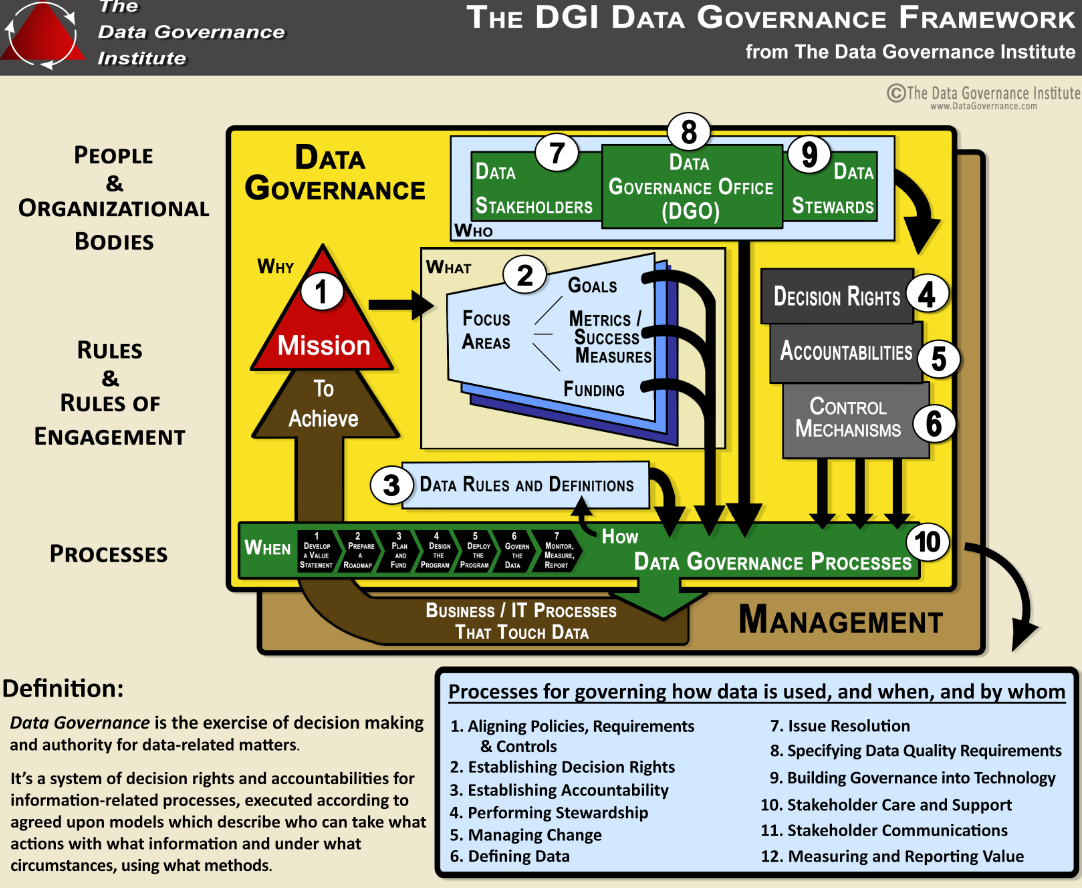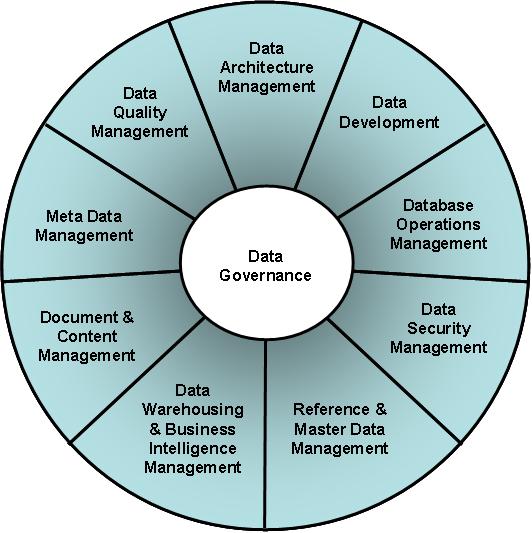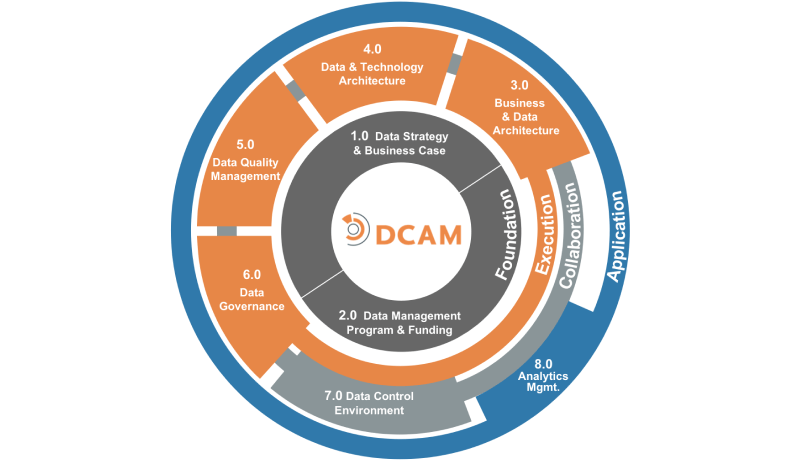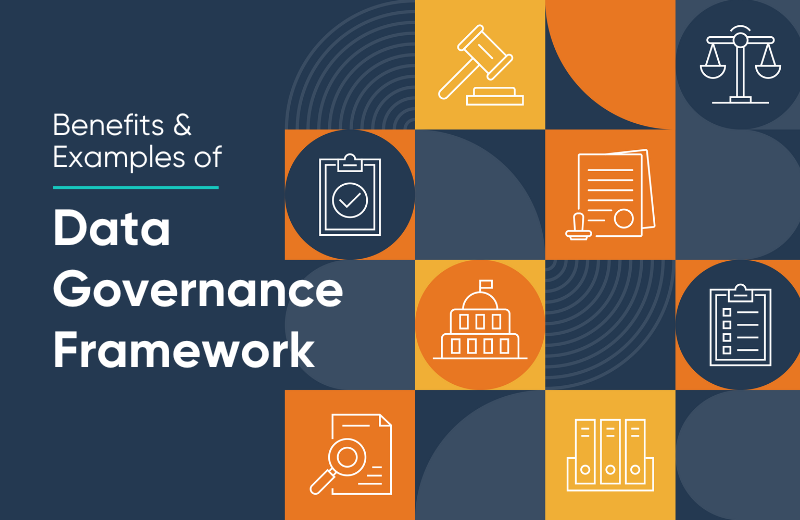According to a report from Harvard Business School online, data-driven organizations are three times more likely to report improvements in decision-making. If you also want to take more data-driven decisions but are currently struggling with data challenges, then it is time to consider a data governance framework. But to find a way to deal with data silos, poor data quality, and lack of processes to streamline data to clean meaningful data is no easy task.
Before you begin setting out a data governance framework you have to first understand a few concepts, such as the role of data management and data governance, and the differences between the two. Once you decide it is time to adopt data governance and work on best practices, it is time to outline your data governance strategy and framework.
We understand the importance of having a data governance strategy and framework for the success of any data governance project as we have built solutions for master data management – MDM Studio, application integration – Connectivity Studio, data entry management – Data Entry Workflow, and data quality management – Data Quality Studio. Together they make up our Master Data Management suite for Microsoft Dynamics 365 Finance & Operations (F&O).
Therefore, in the blog, we share the definition of a data governance framework, the key pillars and some templates that will help you get started on your own data transformation journey. So, let’s dive in!
What is a data governance framework?
To understand data governance framework, we need to first understand data governance. As defined in our blog, “Data governance involves the strategy, the people, the tools, and processes involved in data management."
The data governance framework outlines the strategy with definitions for the rules, people, practices, tools, and processes for all the stages in the data lifecycle from creation to storage. This process of creating a template or framework is important as it ensures data quality, validity, consistency, integrity, accountability, security, and access with clear responsibility for teams and clear roles for different functions.
With this framework in place, there is no guesswork required. Organizations can use this framework to succeed in their data governance goals. After they establish a single source of truth, they can use it to derive insights that can help them make impactful business decisions.
What must a data governance framework include?
A data governance framework must include responsibilities for all the different levels of the data pyramid which include operational, strategic, and executive levels. It outlines rules, and policies for different stages from creation to validation, and rules for security and data access at any level.
A data guide: that acts as a business glossary and explains the role of data, the different types of data, and the teams involved.
Data governance team: introduces the team structure and explains the access, responsibilities, and roles for each business unit/level in the data governance team.
Data catalogs: this is important because they help classify data. This catalog will help the team to find, organize, and classify data. Once the team has managed to classify the organization’s data, they can create collections to make things simpler for other team members.
Data governance plan: with rules that can maintain data accuracy and enrich existing data, authenticate and validate data and create one single source of truth that can be published as master data. Also, protocols for data distribution, data safety, data access and data that needs to be discoverable or hidden.
Data compliance guidelines: to ensure data compliance with government laws and industry regulations. Also, guidelines for data security to ensure a process for data theft, fraud, or any other issues.
Data storage guidelines: to help the teams organize data storage, categorization, access, and retrieval.
Data standards: to ensure that standards are maintained across the organization for consistency of data between teams.
While we have mentioned a recommended list of items that every data governance framework must include, it is important to consider your organization’s key priorities. While our list does apply to all industries, one must also consider that every industry is regulated by specific laws and policies. Keeping this in mind, you need to outline processes, roles, rules, and a strategy for your organization.
For example, the food manufacturing industry is governed by industry laws that need to ensure that certain standards are adhered to while packaging, shipping, etc. Therefore, any data that is on the packaging or while shipping products must be carefully managed and in compliance with government and industry regulations. All these factors have to be taken into account while creating the data government strategy and framework.
Benefits of a data governance framework
According to Statista, from 2020 to 2022, the total enterprise data volume has grown from 1 petabyte (PB) to 2.02 petabytes which is a 42.2% average annual growth over just two years! Data creation and use is growing across organizations at breakneck speed. And this data is spread across a number of business systems and applications and used by different teams across the organization. Therefore, having a data governance strategy is not just important but becoming a necessity for organizations. And every data governance strategy needs a framework to ensure that businesses have every important aspect defined with guidelines and processes.
A data governance framework becomes the end-all document of rules for all business units for creating, collecting, storing, and distributing that data. A data governance framework has several benefits such as:
- Helps organizations structure their data governance strategy.
- Establishes policies and rules that ensure consistency, validity, integrity, and accuracy of data across the organization.
- Helps to keep regulatory compliance checks and ensure responsibilities and processes.
- Makes data access clear to ensure data is not misused, replicated, used in silos which creates confusion and can also lead to issues.
- Supports collaboration with clear demarcations of roles and responsibilities for different business units involved in the data governance team.
- Helps you introduce tools that can be used by even non-technical users for different processes such as data entry management, data quality management, integration, master data management, data security, and analytics.
- Helps you govern data across all business systems and applications in the cloud and on-premises and transform and enrich that data into the truth. This one source of truth can then be used to derive meaningful insights using analytical tools.
Top 3 data governance framework templates
The DGI Framework
The DGI Framework by the Data Governance Institute is a highly rated and recommended framework to fall back on. Founded in 2003, the Data Governance Institute is a renowned name in the industry for all things data governance.
The Data Governance Framework is broken up into three main overarching sections that consists of 10 universal components.
- The first one focuses on the fundamental question 'why' and 'what' needs to be done to achieve that mission. This encompasses the goals, metrics, focus areas and budget.
- The second one focuses on the 'who' aspect and explains all the responsibilities and roles of the data governance organization.
- The third one covers the 'how' question and outlines processes and this section focuses on proactive, reactive, and ongoing data governance with rules, processes, and control mechanisms.

Source: DGI Framework
DAMA-DMBOK Functional Framework
The DAMA DMBOK Functional Framework by DAMA DACH is another widely used and well-known framework. DAMA DACH is DACH chapter (Germany, Austria, and Switzerland) of DAMA International, another well-known body for professionals in data and information management.
The framework defines 11 Data Management Knowledge areas with data governance at the center. So, while data governance touches all the data management areas, they all function independently and have central goals, processes, and metrics defined by the data governance rules, processes, strategy, and people.
Source: DAMA-DMBOK Functional Framework
The Data Management Capability Assessment Model
Developed by EDM Council members, DCAM – the Data Management Capability Assessment Model is based on industry research and was first published in 2014.
DCAM has four layers and each of them involves different functions.
- The collaborative component includes the data control environment and defines collaboration, access, and data distribution.
- The foundational layer includes data strategy and business case and data management program and funding, which helps teams define their strategy, and build a roadmap.
- The executive components layer defines business and data architecture, data governance, data quality, data, and technology architecture. These help organizations define and deliver their data strategy.
- The last layer is the analytics layer which helps teams manage analytics using expertise.

Source: DCAM—the Data Management Capability Assessment Model
Are you ready to transform your data processes by defining your data governance framework?
Once you have defined your data governance strategy using best practices, and identified a framework that works for you, it is time to discuss this with the data governance team. A ready-to-use framework can be a great starting point and tailored to suit your organization. It is possible you might have to explore or chart your own data governance framework based on the way data flows in your current business systems and applications.
The next step would be to get management buy-in on your framework and then identify tools that complement your vision. If you are using Microsoft Dynamics 365 Finance & Supply Chain Management, we do have solutions for data quality, data entry, master data management, application integration, security and compliance, and analytics and business intelligence. You can explore our solutions and if you think they could be the right fit for your organization, reach out to our experts.





